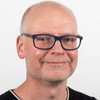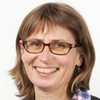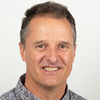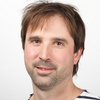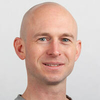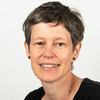Department Surface Waters - Research and Management
Lab and field equipment
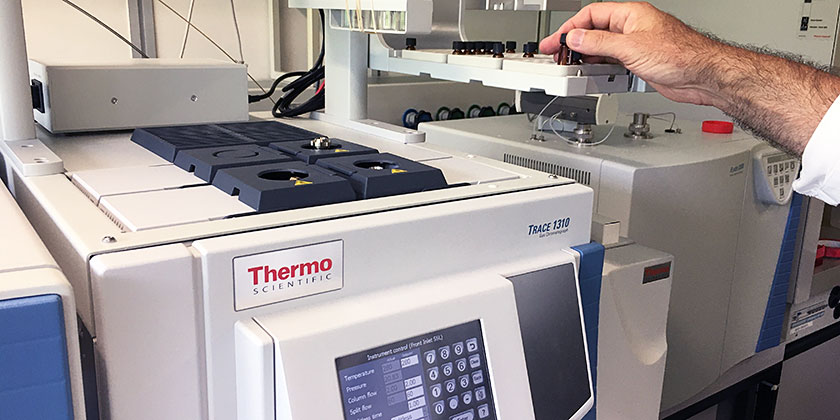
Our scientists and experienced technicians are capable of many types of high-end analyses in the laboratory and in the field. As a multidisciplinary department, we combine methodogy and instruments from chemistry, aquatic physics, microbiology, sedimentology and more.
As a system-oriented department we have excellent capacity and know-how for limnological fieldwork.
If you are looking for support or collaboration on certain methods for your project, have a look at this page. The lists on the right provide an overview of our scientific instruments and equipment.
Click below for the capabilities of our specialized laboratories.
Fieldwork and Infrastructure
Boats and field Infrastructure
The Surf department has outstanding capacity and personnel trained for fieldwork on aquatic systems. We operate several towable work boats (Salm) as well as two larger ships currently operating on Lake Lucerne and Zug. We are equipped for various sampling activities of water (Niskin bottles, Peristaltic pumps, programmable autosamplers and in-situ pumps), sediment (coring devices) & plankton (nets). We have know-how and material for deploying moorings and automated measuring stations and use in-situ profiling sensor systems in lakes.
Remote operated underwater vehicle
Our ROV (BlueROV 2) is capable of underwater imaging and a gripper allows underwater object manipulation. It supports various inspection and research tasks.
Custom research instruments & equipment
A 3D printer (Fused Deposition Modelling) is available with a 30x30x60 cm building platform and a nozzle for temperatures up to 280° C, allowing printing of a wide range of plastics and models for research applications.
We also have a well-equipped electronics lab and a mechanical workshop to develop custom-made research instruments and maintain our equipment.
Microbiological and Molecular Biology Laboratories
The Microbial Ecology Laboratories in Kastanienbaum support advanced environmental microbiology methods. We have expertise in nucleic acid extractions from various environmental sources e.g. water & wastewater (filtration devices for 47mm and 145mm filters), activated sludge, sediment and biofilm (FastPrep, 24 bead-beater, cooled centrifuges) and facilities for contamination-free sample handling (cleanbenches). We support nucleic acid quantitation and quality control protocols (e.g. spectrophotometric (Nanodrop) and dye-based (qubit) quantitation, fragment sizing by gel-electrophoresis with multi-color imaging or Agilent TapeStation).
Central to our work is detection and quantitation of genetic targets (standard and gradient PCR, Roche LightCycler 480 qPCR) and various sequencing applications (in house: Nanopore sequencing on MinION and GridION).
We are equipped with an (inverted) epifluorescence microscope (Leica DMI 600B), allowing FISH and many other microcopy applications and digital image analysis. We perform total cell counts on the NovoCyte Advanteon flow cytometer. Various colorimetric and fluorescence based assays can be performed on our Plate Reader (SpectraMax i3). Our biosafety level 2 microbiological laboratory allows safe handling of potentially hazardous samples (e.g. hospital wastewater) or potential pathogens, as well as all kinds of microbial cultivations (incubators, shaking incubators).
Also available in Kastanienbaum: autoclave, glovebox for working with anaerobic samples (BSL1) and limited storage capacity at 4°C, -20°C and -70°C.
Biogeochemistry and Stable Isotope Laboratory
Our laboratories perform elemental analysis (C and N) and isotope ratios of solids (sediment, algae, bacteria).
Extraction and quantification by GC / HPLC measurements of various biomarkers (lipids, pigments, amino acids, sugars, amino sugars, lignin) and their compound specific C, N, and H isotope ratio by mass spectrometry. Isotope measurements on gases (CH4 and CO2).
A field deployable gas analyzer (Los Gatos, CH4 and CO2) with equilibrium unit is available for in-situ water measurements.
Our programmable In-situ pumps (McLane) can be used for filtering particles out of the water column.
Water Chemistry Laboratory
The aquatic geochemistry laboratories are fully equipped for sampling and handling of general water quality parameters, including dissolved and total nutrients (N & P species), major inorganic components (ion chromatography), pH, TOC/TON, O2 and trace gasses (CH4, N2O).
Field deployable chemical sensors (EXO, WTW) and field spectrophotometer are also available for in situ analyses.
The specific research focus of the aquatic geochemistry group is trace metals and metal stable isotopes, and the group has facilities to sample for sensitive, contamination-prone metals (Niskin-X bottles, membrane pump) as well as sample preparation, including automated concentration or dilution and separation from sample matrix.
Eawag has a centralized mass spectrometry facility in Dübendorf, which is regularly used by the aquatic geochemistry group.
Lake physics lab and field capabilities
The department has a long history of aquatic physics measurements for in depth understanding of physical processes and interdisciplinary system based investigations. The department is equipped for physicochemical measurements with several CTD profilers (conductivity, temperature, depth, PAR, turbidity, fluorescence etc.), microstructure profilers, Temperature probes and profiling systems, Current / Flow measurements (ADCP for short and long range).
The department has gained expertise in complicated deployment at all depth range (above pockmarks, lake canyon etc.).
Our department has a strong open access policy for the collected data with our measurements being made available together with the processing scripts (see Datalakes). Our research combines field observations with lake hydrodynamic models (one and three dimensional) that are also made available in near real time through various platform Simstrat, Meteolakes.
Remote sensing / optics
We maintain and operate optical instruments that allow for measurements of aquatic absorption, scattering and reflectance at high spectral resolution. Such measurements are carried out in the field (Wetlaboratories AC-S, VSF-3) or in the laboratory (filter pad absorption technique using an integrating sphere).
We are experienced in deriving a variety of parameters related to surface waters from optical satellite data, we process and distribute near-real time water quality data for all of Switzerland, and we perform analyses based on Earth observation data at global scale.
Sedimentology and Biomarkers labs
The sedimentology laboratory is fully equipped for the sampling and handling of short gravity sediment cores (63 and 150mm diameters) and sediment traps (cylindrical and sequential). Platforms and devices for longer core are available in collaboration with ETHZ.
The lab hosts a state-of-the-art Geotek core opener, able to handle cores with diameters ranging from 50 to 150mm.
We have expertise in XRF core scanning (Avaatech), linescan core photography, subsampling, freeze-drying, laser-diffraction grain size distribution, bulk parameter analyses such as TOC, TN, TIC (CaCO3) and ROC, as well as N and C isotopic composition and the determination of biogenic Silica content.
Furthermore, the biomarker laboratory has facilities to extract (ASE), purify, and separate sedimentary lipids, such as leaf waxes, sterols/stanols and alkenones. Identification and quantification of these fossil molecules are performed on a GC-MS and/or a (prep-)GC-FID.
We also conduct trace metal analyses in sediments in collaboration with the Mass Spec Facility.
Sediment Dating (Gamma & 14C) labs
The Gamma laboratory in Dübendorf is equipped with several high-purity Germanium detectors for the detection of gamma rays.
We routinely conduct analyses of sediment cores for dating purposes based on the excess210Pb method and the detection of 137Cs peaks caused by the nuclear bomb tests in the 1960’s and the Chernobyl accident in 1986.
In addition, we prepare samples for 14C analyses which are then performed in the Laboratory of Ion Beam Physics at ETHZ.
Investigating rivers and floodplains
The river restoration group uses state-of-the art equipment for combined biological and abiotic surveys in wadable rivers and streams.
With our custom-made portable flume, we are able to modify hydraulics at the patch scale and study ecological processes (e.g. invertebrate drift) in-situ.
We are using drones (DJI Phantom 4 RTK, DJI Mavic 2 Pro) and a GNSS Rover (Leica GS07 & CS20) to produce georeferenced aerial images and 3D models.
Furthermore, the group is equipped for long-term measurements with different sensors, like pressure, temperature and multiparameter sondes (EXO).




